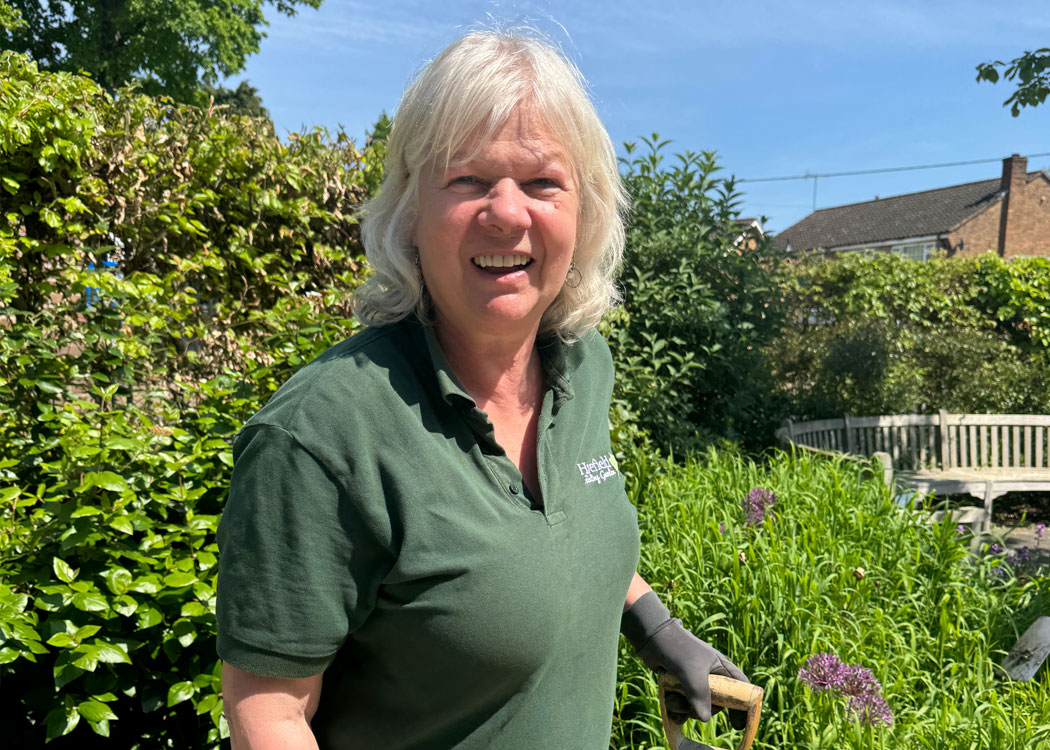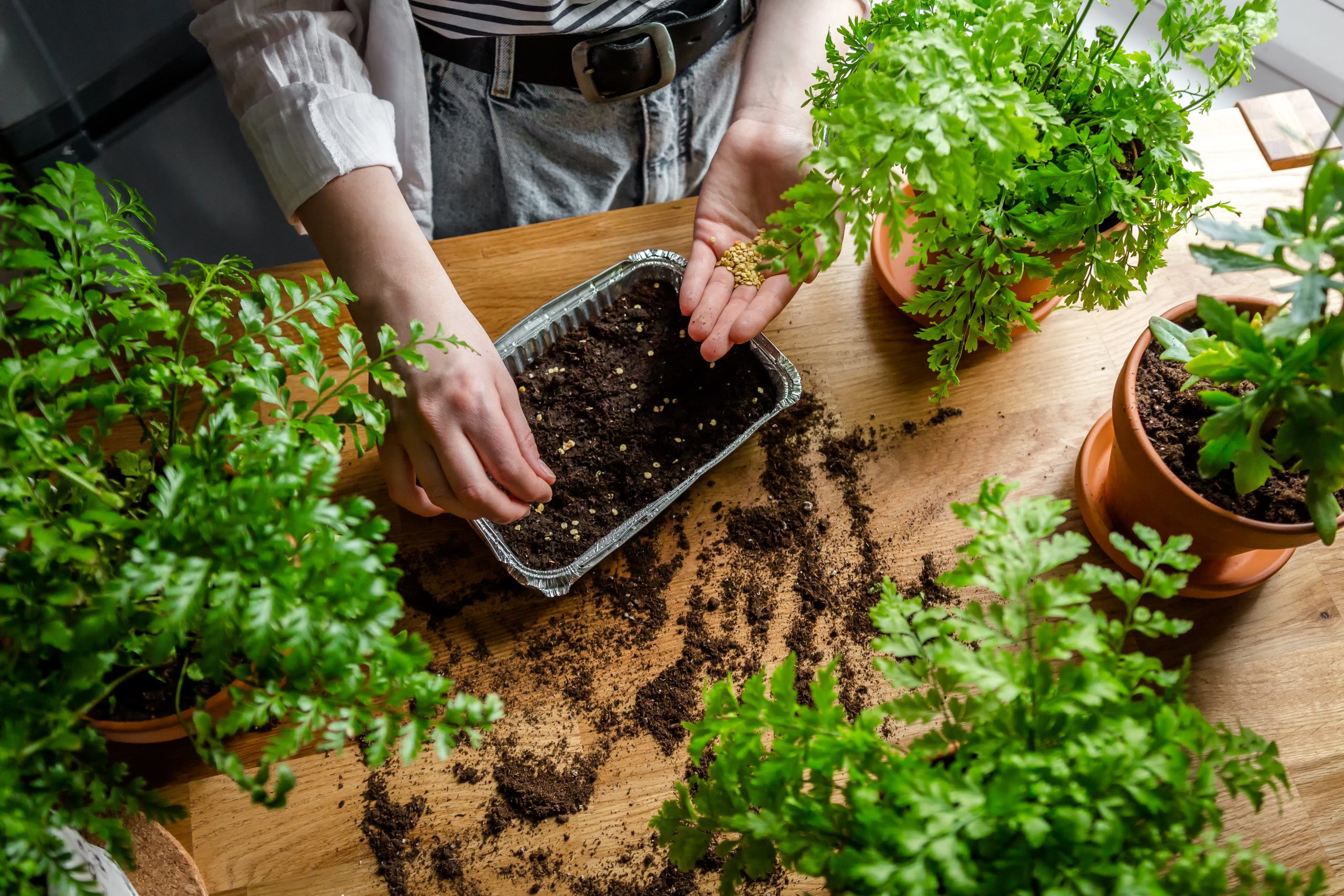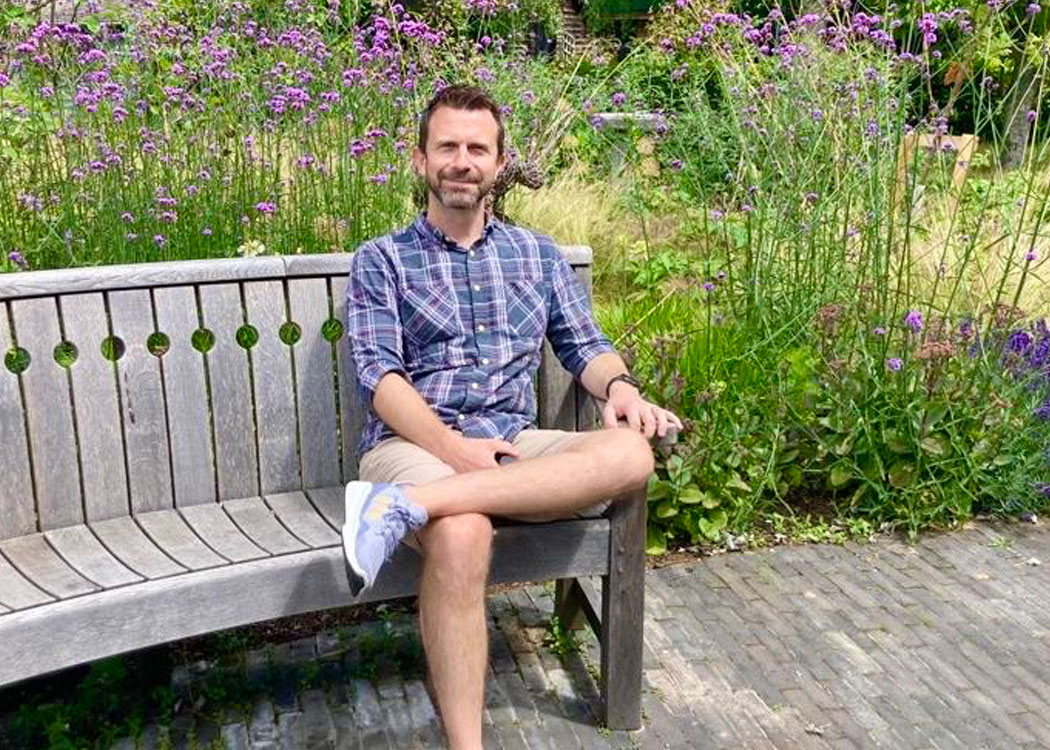“This garden makes a huge difference to the lives of countless patients and their tireless support systems”
Rhianna Colyer, ITU nurse
Tips from the garden by Head Gardener, Brenda Prada. After volunteering with us in the garden, in January 2024 Brenda came on board as Head Gardener for the Harefield Healing Garden. Brenda brings with her a wealth of expertise and is a real asset to our team.


Autumn Tips for the Garden
Autumn is an important time for wildlife in the garden so leave the excessive tidying up of the garden to provide natural wildlife habitats for creatures to hide and bed down for winter. You will notice spiders creating their webs, butterflies still searching for nectar and birds looking for food, so also leave some of those windfallen fruits. To increase biodiversity in your outdoor space, now is an ideal time to add wildlife-friendly trees and shrubs which will provide lasting extra habitats and food sources, such as berries, for all types of creatures – save money by buying and planting them bare-root at this time of year. You may also choose to reduce your grassed areas to provide more bio-diverse areas of planting. Turf can be removed and set aside to create loam.
Early autumn is an ideal time to sow wildflower seed and to order spring bulbs for planting. Additional plants can be created for free by splitting and moving perennials and cuttings taken of your favourite or most vulnerable plants.
Now is a good time to mulch your borders by using previous years’ leaf mould and homemade compost to increase worm and micro-bacterial activity in the soil, as well as providing extra habitats for creatures to hide and feed. Compost can continue to be topped up to let the natural bacteria do its work in the compost bins. Leaves can be gathered to enable the slow, cool action of fungi to create leaf mould.
Autumn is a time for patience, as the high intensity of colour and activity above ground in summer moves more to the all-important, unseen activity underground of micro-bacterial action in the soil, root and bulb development and a move to necessary plant and seed dormancy. The autumn weather and light conditions naturally trigger these changes and of course the outstanding rich autumn colours of the garden for all to revere. Take time out to calmly enjoy your outdoor space by leaving the plants and the wildlife to prepare and settle down for winter.
Tips from the garden by Head Gardener, Brenda Prada. After volunteering with us in the garden, in January 2024 Brenda came on board as Head Gardener for the Harefield Healing Garden. Brenda brings with her a wealth of expertise and is a real asset to our team.

Autumn Tips for the Garden
Autumn is an important time for wildlife in the garden so leave the excessive tidying up of the garden to provide natural wildlife habitats for creatures to hide and bed down for winter. You will notice spiders creating their webs, butterflies still searching for nectar and birds looking for food, so also leave some of those windfallen fruits. To increase biodiversity in your outdoor space, now is an ideal time to add wildlife-friendly trees and shrubs which will provide lasting extra habitats and food sources, such as berries, for all types of creatures – save money by buying and planting them bare-root at this time of year. You may also choose to reduce your grassed areas to provide more bio-diverse areas of planting. Turf can be removed and set aside to create loam.
Early autumn is an ideal time to sow wildflower seed and to order spring bulbs for planting. Additional plants can be created for free by splitting and moving perennials and cuttings taken of your favourite or most vulnerable plants.
Now is a good time to mulch your borders by using previous years’ leaf mould and homemade compost to increase worm and micro-bacterial activity in the soil, as well as providing extra habitats for creatures to hide and feed. Compost can continue to be topped up to let the natural bacteria do its work in the compost bins. Leaves can be gathered to enable the slow, cool action of fungi to create leaf mould.
Autumn is a time for patience, as the high intensity of colour and activity above ground in summer moves more to the all-important, unseen activity underground of micro-bacterial action in the soil, root and bulb development and a move to necessary plant and seed dormancy. The autumn weather and light conditions naturally trigger these changes and of course the outstanding rich autumn colours of the garden for all to revere. Take time out to calmly enjoy your outdoor space by leaving the plants and the wildlife to prepare and settle down for winter.

“To have this wonderful garden for patients to access is fabulous for wellbeing and health”
Katharine Scott, Trust lead for Older People and Physical Disability
The Garden design and build
Leading landscape and garden designers Bowles & Wyer have created this fabulous garden, designed by RHS Chelsea Flower Show Gold Medal winning Garden Designer, James Smith, taking into account input from patients, their relatives, doctors, nurses, psychologists, and Occupational Therapists, among other hospital staff. Using their considerable experience in creating hospital gardens they have brought this accessible and therapeutic garden to life at Harefield Hospital.
Meet James Smith the garden designer

James is a RHS Chelsea Flower Show Gold Medal-winning Garden designer, Chartered Landscape Architect, and Registered Member of the Society of Garden Designers. Former Design Director with Landscape company Bowles & Wyer, James set up James Smith Landscape & Garden Design in 2021, winning a gold medal at RHS Chelsea Flower Show in 2023. James continues to support the Healing Garden, visiting frequently and providing us with the benefit of his expertise.
Biodiversity in the garden. In 2021 when the Healing Garden was created from half an acre of mown grass, increasing biodiversity was an important factor in the planning. But nobody had any real idea of the astonishing impact that the change in the environment would have on the insects, invertebrates and birdlife in the garden.
Ian, a long-term in-patient, has watched the garden grow, documenting and photographing the insect and bird life that find food and shelter in the garden day by day which we rarely look close enough to see, and observing the change in biodiversity in the Garden.
Ian has kindly documented his findings:
Birds seen in the garden: Great spotted woodpecker (seen in the morning, late evening and weekends when few people are around), Waxwing (Migratory flock of 60-100 birds seen at the beginning of the year. They ate the fruits of three Rowan trees in 4 days.), Tree creeper, Wren, Goldfinch (small flock half a dozen), Blue Tit, Long Tail Tit, Wood pigeon, Red Kite, House sparrow, Magpie, Crow, Raven, Green Parakeets
Butterflies: Peacock, Red Admiral, Large White (aka Cabbage Patch Butterfly), Small White, Holly Blue, Small Blues, Painted Lady, Specked Wood, Small Copper, Green Hairstreak
Moths: Jersey Tiger, Mint Moth
Insects and flies: Green stink bug, Brown marmorated stink bug, Parent bug, Ladybug, Asian lady beetle, Pollen beetles, Hoverflies, Damselflies, Dragonfly, Small scissor bees, Buffish bee, Mining Bees(all three are solitary bees, which live in places like the Bug Hotel), Various other common insects.
We manage the health of the garden without pesticides so as not to kill beneficial organisms and we accept the presence of some weeds and insect damage to plants. Different shapes and structures in the garden – trees, tall shrubs and climbers have created vertical spaces for birds and insects to shelter whilst lower-growing perennials, grasses and ground cover plants enable a greater variety of different habitats, and a mix of plants for different seasons enables insects, invertebrates and birds to find food and shelter.
Our newly sown wildflower meadow will soon add a richer diversity of native flowers and encourage even more beneficial insects and pollinators, including a wider variety of butterflies. In autumn and winter the trees and shrubs offer up fruits and berries to add to the different interlocking food sources for various forms of wildlife which add to the biodiversity in the garden.
Photos taken by Ian, in the Healing Garden.
Patients say that the garden helps them
“feel part of the world”

This garden is funded entirely by the generosity of people like you. Any amount, no matter how great or small, helps to ensure that The Healing Garden will always be there for those who need it.
We need to raise money every year to cover the cost of plants, bulbs, seeds and trees, for professional help, and tools and materials, to keep the garden growing and evolving and in top condition.
All funds raised to go to the Harefield Healing Garden; a restricted appeal of the
